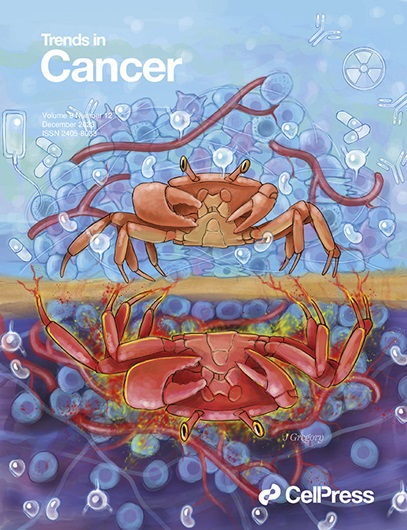癌症中DNA扩增的异常细胞核。
IF 14.3
1区 医学
Q1 ONCOLOGY
引用次数: 0
摘要
染色体外 DNA(ecDNA)或染色体内同源染色区(HSR)形式的基因扩增是癌症的一个新特征。最近的研究表明,核结构异常与扩增 DNA 的生物发生和进化有关。在此,我们将讨论异常细胞核与基因扩增之间的相互作用是如何驱动癌症耐药性和转移的。本文章由计算机程序翻译,如有差异,请以英文原文为准。
Aberrant nuclei with amplified DNA in cancer.
Gene amplification in the form of extrachromosomal DNA (ecDNA) or intrachromosomal homogenous staining regions (HSRs) is an emerging hallmark in cancer. Recent studies implicate abnormal nuclear structures in the biogenesis and evolution of amplified DNA. Here, we discuss how the interplay between aberrant nuclei and gene amplification drives cancer therapy resistance and metastasis.
求助全文
通过发布文献求助,成功后即可免费获取论文全文。
去求助
来源期刊

Trends in cancer
Medicine-Oncology
CiteScore
28.50
自引率
0.50%
发文量
138
期刊介绍:
Trends in Cancer, a part of the Trends review journals, delivers concise and engaging expert commentary on key research topics and cutting-edge advances in cancer discovery and medicine.
Trends in Cancer serves as a unique platform for multidisciplinary information, fostering discussion and education for scientists, clinicians, policy makers, and patients & advocates.Covering various aspects, it presents opportunities, challenges, and impacts of basic, translational, and clinical findings, industry R&D, technology, innovation, ethics, and cancer policy and funding in an authoritative yet reader-friendly format.
 求助内容:
求助内容: 应助结果提醒方式:
应助结果提醒方式:


